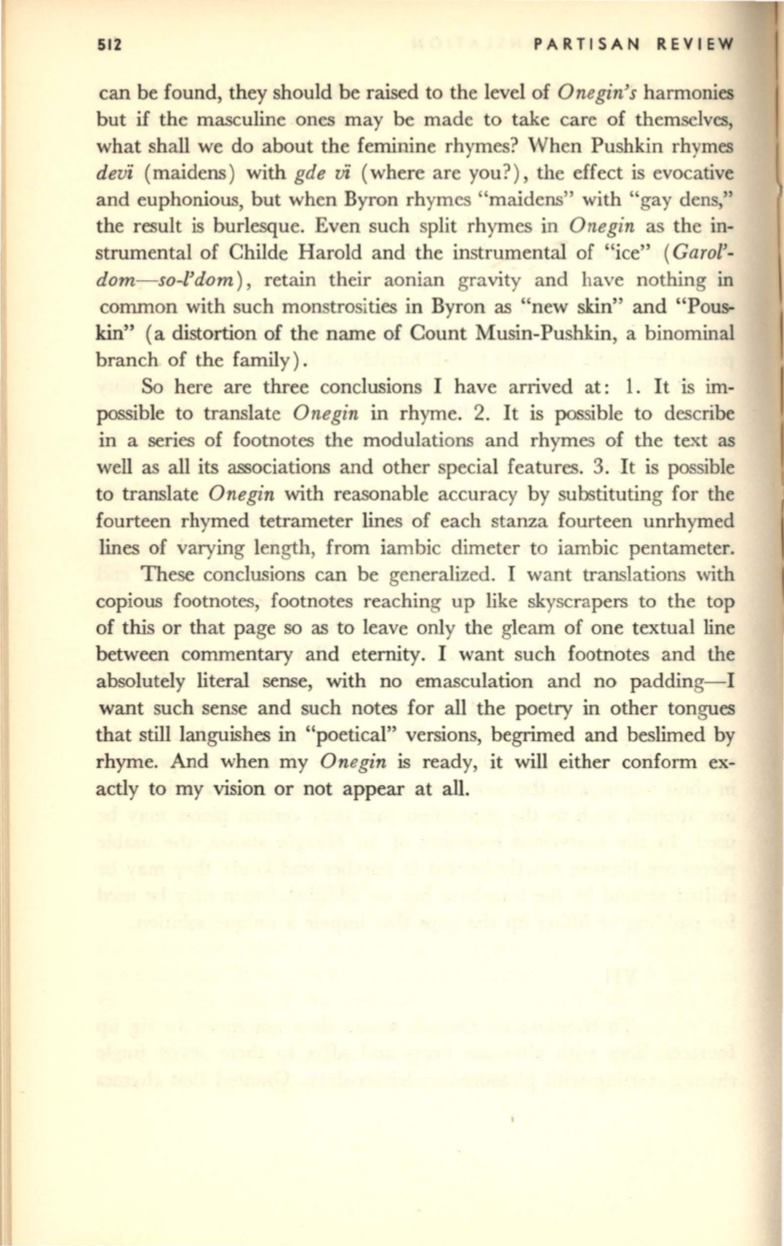
512
PARTISAN REVIEW
can be found, they should be raised to the level of
Onegin's
harmonies
but if the masculine ones may be made to take care of themselves,
what shall we do about the feminine rhymes? When Pushkin rhymes
dev"i
(maidens ) with
gde
v"i
(where are you? ) , the effect is evocative
and euphonious, but when Byron rhymes "maidens" with " gay dens,"
the result is burlesque. Even such split rhymes in
Onegin
as the in–
strumental of Childe Harold and the instrumental of "ice"
(Carol'–
dom-so-l'dom)
,
retain their aonian gravity and have nothing
in
common with such monstrosities in Byron as "new skin" and "Pous–
kin" (a distortion of the name of Count Musin-Pushkin, a binorninal
branch of the family).
So here are three conclusions I have arrived at: 1. It is
im–
possible to translate
Onegin
in rhyme. 2. It is possible to describe
in a series of footnotes the modulations and rhymes of the text as
well as all its associations and other special features. 3. It is possible
to translate
Onegin
with reasonable accuracy by substituting for the
fourteen rhymed tetrameter lines of each stanza fourteen unrhymed
lines of varying length, from iambic dimeter to iambic pentameter.
These conclusions can be generalized. I want translations with
copious footnotes, footnotes reaching up like skyscrapers to the top
of this or that page so as to leave only the gleam of one textual line
between commentary and eternity. I want such footnotes and the
absolutely literal sense, with no emasculation and no padding-I
want such sense and such notes for all the poetry in other tongues
that still languishes in "poetical" versions, begrimed and beslimed by
rhyme. And when my
Onegin
is ready, it will either conform ex–
actly to my vision or not appear at all.


